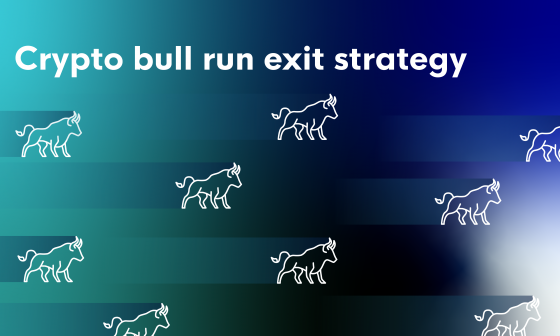The appeal of smaller-cap crypto projects is in their potential. In a heated market the returns can be fantastic. These are the crypto assets that may see x10, x50, x100 growth during a market cycle and make their holders happy they got in on time.
Those that are late…are now investors for the next few years.
The solution is being smart and managing your risk. From all the promising projects only, few will survive and fewer will bring in those massive returns. This does not affect only smaller projects, just look at the top 15 in market cap in 2013:

Source: Alex Lashkov
Most of these projects like Peercoin and Namecoin are long forgotten to traders that entered the space recently, although they were the biggest altcoins of their day.
Reasons why trading small-cap projects is risky
To mitigate the risks, you must first understand them. Let’s glance over the main perils that exist with trading these types of alts:
1. The project may fail quickly – the dreaded rug pull
Since these alts are valued based on their promise (like penny stocks) something might go wrong that causes the price to drop dramatically. If you’re in a position you may not even have time to react.
In case of a con the developers issue tokens, have some marketing generating a buzz, followed by a Uniswap or a Centralised Exchange (CEX) listing with an infusion of liquidity. In August 2020 the devs for TMPL are alleged to have done exactly that:

It does not always have to be malicious intent. In 2021 the decentralized finance platform DODO was drained of $3.8 million in a DeFi exploit. In the aftermath price has rebounded, yet immediately after the news broke out price plummeted.
With the rise of DeFi, anonymous founding teams are becoming more common. Since these projects are very lucrative, we urge you to study thoroughly the whitepaper or any released information about team incentives, and decide for yourself if it is rugproof, or if it fulfils some safety criteria of yours.
2. Low liquidity
Liquidity measures how quickly the asset can be converted into another asset. When plenty of people are buying and selling you can easily enter and exit. This definitely is the case with Bitcoin, Ethereum and other larger cap projects. But for some small alts, you may end up waiting for a long time for someone to fill your order at what you consider a fair price.
This impacts the distance of the bid/ask spread. Below is the order book for PMGT/USDT on KuCoin, showing a vast difference between the price at which you can sell and buy:

There’s about $130 difference or almost 10% between the two prices. So, if your strategy is telling you to buy/sell at a certain moment you may destroy your profits by getting a distorted price. This is called slippage and can emerge at moments of high volatility for plenty of assets.
3. Lack of risk management/smart tools on exchanges
Not all exchanges offer the same features in terms of position management. In some cases, you can set Stop Limit orders and use trailing stop loss, while on others you have todo all manually. In your pursuit of the next hot coin, you will end up using different exchanges, some of them better suited to capturing parabolic gains and protecting you from the downside.
A trailing-stop loss can be a fantastic way to capture profits on an alt that is in price discovery, where no one can predict the top.
If you’re trading on DEXs these features become even more limited.
4. Your leverage is too high
Using leverage may be a useful tool for experienced traders. However, cranking it up to double digits and higher in the volatile crypto markets will put your trading funds in danger. These markets can fluctuate by 10%+ a day, even more with smaller caps so every move is magnified.
Trading small-cap projects on spot is perfectly fine, in fact it may be the best way to capture high-potential projects with a good strategy. If the project can do x10 by holding and your trading strategy has an edge, beating holding should be considered a success.
5. Getting early access is expensive
If you’re attempting to be among the fist that manages to buy a newly listed Uniswap gem, prepare for the fees. You’ll need Ethereum to pay for the transfer and transaction often priced at a few hundred dollars. On Feb. 23, the average transaction fee on Ethereum soared past $39 for the first time, which remains the peak for now. The transaction can also fail if not priced well, causing you to lose the fee.
So, if you want to open a position that is not in the thousands of dollars it may not be worth it.
Alternatives are emerging that are promising lower fees. It will be interesting to see how this develops, and weather more traders will get access to infant projects. We can point to Binance Smart Chain as a successful Ethereum blockchain clone, where fees are very affordable with many promising projects launching on it. With an average gas price of 20 gwei, sending 10 BNB worth about $300 should cost you roughly $0.01.
How to trade smaller caps safely
We understand the inherent risks of small projects, liquidity, risk management tools, leverage, and high fees. Now we’ll outline how you can create a trading process that allows you to trade these alts with some safety. In the sport of trading there is no such thing as certain, but you can certainly reduce risk.
1. Don’t marry your bags
When actively trading you need to have a trading strategy that determines when you open/close a position and how much you risk. If buying and holding having price targets for taking profit is a good idea. “Once X reaches Y I will take 10% off the table.”
This may seem farfetched in the midst of a bull market but the trend will eventually change. If you do not take profit on green candles you will end up holding your bags through a bear market that may last several years. Even better could be setting take profit targets based on fundamental success milestones of the project, rather than just price.
You can find full trading strategies here.
2. Use a trailing stop loss or take profit
Naturally, you need to understand how these handy features work, as they can be very useful for when you don’t know how far price will trend. In essence, they activate when price starts trending down, but not before.
The reason more crypto traders don’t use them is that they are not available on every exchange. If you want to use them on Coinbase Pro, Binance, Bitpanda Pro, HitBTC or Bitfinex you can do so through CLEO.one. You can use them as single positions or as a part of a crypto bot.
3. Always have a stop loss or market-based close rule
If you open positions manually and manage them in the same way, anything can happen while you are sleeping, at work, living life. Crypto markets are open 24/7 and as we saw news about a project or tweet by a billionaire can derail price in minutes. You might think you can manage, but you are putting yourself under unnecessary stress that might impact other faucets of your life.
Market based close conditions are the best way to manage positions. They reflect what is really happening and are ideally a tested part of your strategy. For example, with small-caps you may choose to close your position when MACD turns red and Bitcoin dominance is increasing.
A stop loss also works well. The longer-term the position is, the wider the stop loss needs to be. You may end up losing a bit on the position in case it does not go your way, but at least you will have fresh powder on the side-lines for new opportunities.
In CLEO.one you can set bots market-based conditions on all the featured exchanges.
4. If you can’t afford the fees wait for a CEX listing
The buzz around some coins is so strong that even if you have $300 you start to think that it makes sense to spend half of it on fees. If you’ve done your research and are super confident go for it. However, if not wait for a CEX listing that for the truly promising projects usually happens quite soon.
For example, HitBTC features small-caps like CHSB, HEX and VRA before many larger exchanges. You can also trade them with smart features like trailing Take Profit and Stop Loss or go fully automatic and run custom crypto bots for free.
5. Always check liquidity
Liquidity can wreck your profits so you always need to know what you’re getting yourself into. It’s not only slippage, but even the data on which you do technical analysis can be imperfect.
That example on the PMGT/USDT has a chart that on the 1 hour looks like this:

Staples like Moving Averages, RSI and, VWAP will be all over the place. Constructing or executing a trading strategy will be difficult. To check how it would work, make sure you perform a couple of backtests and investigate where your strategy is opening/closing positions.
If you’re venturing into something with a char that has almost no data, you’re probably doing so based on fundamentals. Make sure the lack of technical information is substituted by a strong fundamental analysis.
How to trade small-cap crypto projects safely – conclusion
As we saw trading small-caps has a lot of potential, but only if you overcome the lack of liquidity, smart features, high trading fees and if you use leverage sparingly. With high rewards comes high risk and, in a market, as volatile as crypto it could ruin your account.
You can mitigate this with a solid trading strategy, a respected close rule, waiting on projects to reach DEXs, and understanding the liquidity of the trading pair.
As a rule of thumb, take a trading presumption (I’ll buy when RSI is crossing up 50 for example) and backtest it. If it is yielding good results, start paper trading it for a but and see if the strategy is retuning the same results. Finally, you can choose to execute it manually or run it as a crypto bot. Luck can get you a few good trades, but a strategy that can make you long-term profitable.
All of this is available on CLEO.one for free when you connect a HitBTC, Bitpanda Pro or Binance account.



